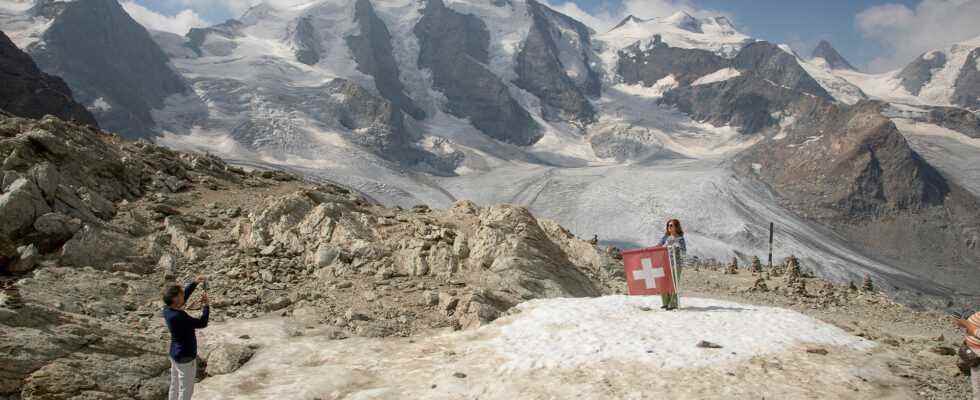Up on the mountain was a refuge built in Italy. The vagaries of climate change have moved the border on the glacier and two thirds of the hut perched at 3,480 meters above sea level is now in Switzerland.
The Matterhorn Guides refuge, which offers board and lodging in this corner of the Alps among the most popular ski enthusiasts, was the subject of intense diplomatic negotiations for more than three years, until a compromise was reached. found last year, the details of which remain secret.
The strategic position of the building arouses envy: it is located at the junction of Zermatt-Cervinia, one of the largest ski resorts in the world, at the heart of a pharaonic modernization project.
“We split the pear a little in two”, explains to AFP the person in charge of the Swiss national border Alain Wicht, who took part in the negotiations where each one made concessions to find “a solution so that both feel if not winners, at least not losers.”
The border melts
On the Alpine glaciers, the Italian-Swiss border follows the line of separation of the waters whose flow towards the north marks the Swiss territory, and that towards the south, Italy.
This was modified by the melting of the Theodule glacier which, losing almost a quarter of its mass between 1973 and 2010, gave way to rock, forcing the two neighbors to redraw a few dozen meters of their border.
According to Mr. Wicht, if these adjustments are frequent, they are generally settled by comparing the readings carried out by the teams of the two countries, without political intervention.
“You have to know that we are fighting with land of lesser value”, he notes: “it is the only place where we suddenly had a building which was located”, giving an “economic value” to the ground.
His Italian colleagues for their part decline any request for an interview “because of the complex international situation”.
The mysterious content of the agreement negotiated in Florence in November 2021 will only be revealed after its approval by the authorities – on the Swiss side, the subject cannot be presented to the Federal Council until 2023, at the earliest.
Former head of the Swiss delegation, Jean-Philippe Amstein is more talkative, explaining that these disputes are resolved by an exchange of territories of similar surface area and value.
“Switzerland is not interested in obtaining a piece of glacier”, he explains, and “the Italians cannot compensate for the loss of Swiss surface area”.
Skiing in the sun
The caretaker of the refuge, Lucio Trucco, 51, has been informed that he will remain on Italian soil. “The refuge remains Italian because we have always been Italian”, he says: “the menu is Italian, the wine is Italian, and the taxes are Italian”.
These years of negotiation have delayed the renovation of the refuge, neither of the villages on either side of the border being able to issue the building permit.
The works will not be finished for the opening of a new cable car, which will allow access to the Little Matterhorn, one of the highest skiable peaks in Europe (3,883 m) from Italy at the end of 2023, ensuring a crossing of the Alps. “with dry feet” for an estimated cost of 45 million francs (45.8 million euros).
The area was only accessible from Zermatt, which summer skiing on the glacier’s 21 kilometers of pistes has helped to become one of Switzerland’s most successful resorts.
While some mid-mountain resorts are preparing for the end of alpine skiing due to global warming, Zermatt-Cervinia makes the fun last, even if these activities contribute to the melting of the glacier.
“That’s why we have to enhance the area here because it will surely be the last to die,” defends Mr. Trucco. “We ski with the sun, in the heat, without having cold feet, and all the same in good snow”, he says.
For the time being, on the Swiss maps, the border surrounding the refuge remains dotted.
